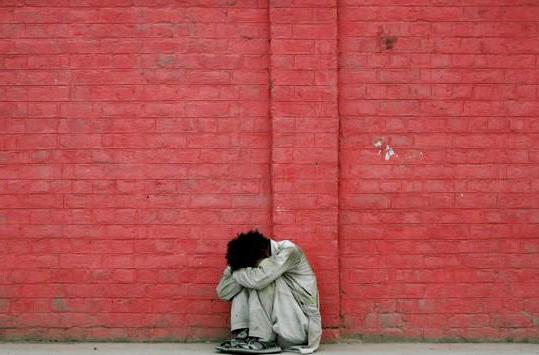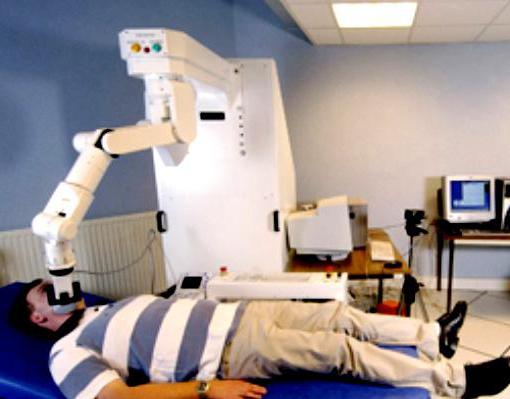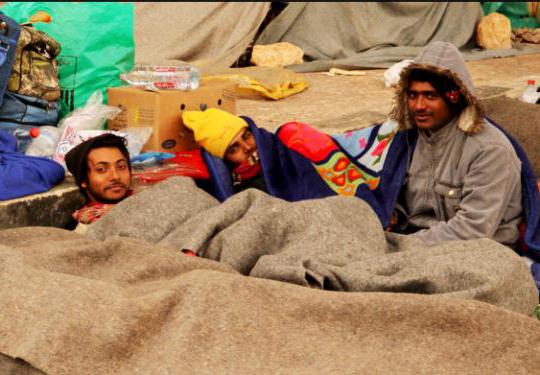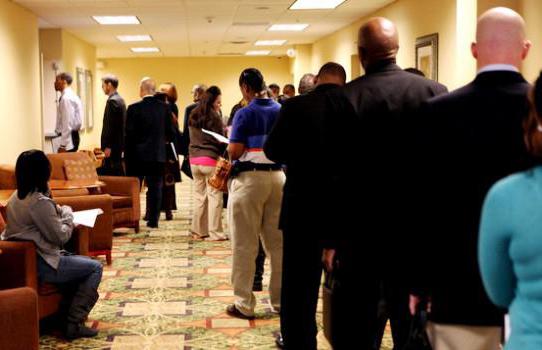Unemployment, which until recently seemed to be a problem of “decaying” capitalism, has firmly entered our life, becoming the most common occurrence. Its essence is clear to everyone and everyone, as it is contained in the name itself: unemployment - this means finding without work those who can and want to work. By analogy, the unemployment rate is the number of those without work divided by the total number of able-bodied people. In fact, not everything is so simple, because not everyone who is unemployed and wants to work is classified as unemployed. In addition, there are various types of unemployment. They can smoothly flow into one another under the influence of political, economic, natural and other disasters, thereby changing the assessment criteria of able-bodied citizens who are not involved in the labor process.
How unemployment was born
At the dawn of our civilization, the employment of the population, not counting the weak, was 100%. The calculation in those days was simple: how much I tried, I got so much wealth. As soon as money and the division of labor appeared, a market arose. Now, in order to eat, it was possible not to hunt and not grow anything, but simply to buy what was needed. This required money. Apart from criminal methods, there was only one way to get them - to earn money. That is, the dependence of people on the availability of work as a source of livelihood appeared and slowly grew.
This principle has been maintained to this day. At first, there were few loafers, but time passed, cities multiplied, and the population increased. The enterprises of those years could no longer provide jobs for everyone, and the sole workers did not compete with more powerful industrial associations, closed their business and replenished the ranks of non-built ones. Thus, the number of those who could not sell their labor gradually increased, and today it has become a global problem.

Who is guilty?
Many people believe that the owners of enterprises who are cutting off staff and throwing people out on the street, as well as migrants who have come to prosperous countries from poverty and offering their services for nothing, are to blame for the rise in unemployment, thereby depriving indigenous citizens of decent work. All this is true, but the causes of unemployment are much broader. As economists found out, the demand for labor directly depends on the production of goods and services in the country, more precisely, on the indicator of their market value (GDP). Its decline automatically entails an increase in unemployment. This phenomenon even has a name - the law of Ouken.
Some economists believe that employment decreases with increasing wealth. That is, the better we live, the more we can afford, the more willing we give birth to children, increasing the population. Children grow up, old people die later and live longer with a better life, there is a glut of the market with excessive labor, in other words, unemployment, in which we begin to live worse. This, in turn, affects our solvency, that is, the worse we live, the less we can afford. Therefore, a substantial part of the goods and services produced is not purchased, and therefore entrepreneurs are forced to reduce production, and with it the states. It turns out such a vicious circle, defining the postulate that unemployment is inevitable.
Or maybe what is to blame?
In addition to problems in the labor market caused by labor itself, there are reasons for unemployment that are not dependent on the human factor.One of the main ones is uncontrollable technological progress. At its core, it is a blessing, as it allows you to use new technologies, get maximum comfort and other joys. But, on the other hand, the improvement of technological processes (robotization) will inevitably lead to an increase in unemployment, because it is more profitable for any entrepreneur to keep in production, instead of, say, hundreds of workers, as many robots who do not go on strike, do not go on vacation, do not get sick, can work 24 hours a day, without requiring surcharges. To control them, it’s enough to leave several high-level specialists, and the rest - behind the gates. Examples of unemployment caused by robots are found in every country. For example, in China, it is planned to install 10,000 smart cars in the assembly of well-known Apple gadgets in China, and leave just enough people to have time to control this entire iron army.

Forced unemployment
Depending on the reasons why a person lost his job, these types of unemployment are distinguished:
- forced;
- natural;
- marginalized.
Forced unemployment, as the name implies, is independent of the workers themselves and happens when economic, technological or political changes occur in society. Three subspecies of forced unemployment:
- cyclic;
- structural;
- technological.
Cyclical unemployment - this is a decrease in demand for labor caused by the decline (crisis) of production. Recessions from time to time (in cycles) are repeated and, as a rule, are quickly replaced by ups, so cyclic unemployment is always short-lived.
Structural unemployment is obtained by the elimination of obsolete industries and unnecessary professions, that is, when changing the economic structure. So, the profession of a coachman, and of the more modern ones, a telephone operator, a draftsman, a stenographer, has become a thing of the past.
Close to structural and technological unemployment, which occurs in situations where production itself remains, but new technologies appear in it (the same robots).
Unemployment is natural
These two words do not seem to be combined, but nevertheless such a concept of unemployment exists and means that the unemployment itself is guilty more than its consumer.

In simple terms, natural unemployment occurs when citizens for one reason or another drop out of work themselves. There are also three subspecies here:
- frictional;
- institutional;
- voluntary.
Frictional unemployment - This is a temporary loss of a person’s workplace associated with obtaining a higher qualification, education, other profession, a change of residence.
By analogy, you might think that institutional unemployment connected with higher education institutions. However, this phenomenon occurs when someone (for example, unions) intervenes in setting salaries different from those that could have developed naturally. Another reason for such unemployment is the establishment of laws governing the rights of those who are laid off to receive social benefits, which reduce the economic loss of losing their jobs.
Voluntary unemployment is, one might say, the lifestyle of individuals who do not want to work. In other words, this is parasitism, for which an article could be obtained in Soviet times, and now no one pays attention to it.
Unemployment is marginal
The word “marginality” can be explained as a sociological phenomenon when a person is in a borderline position between existing social statuses. Some economists define the concept of marginal unemployment as unemployment by the labor process of people with disabilities and youth.

Others distinguish such subspecies in it:
- seasonal (mainly observed in agriculture, in the tourism business);
- youth;
- rural;
- hidden (implies the presence of workers on long vacations without salary, while they are registered in the workplace);
- stagnant - it is faced by people who have a very low chance of getting a job, for example people with disabilities, as well as those who are used to living on benefits and do not want to change anything.
- regional, connected with the mentality of certain groups of the population, for example, Roma, among whom officially working - less than 1%.
Unemployment rate
To determine it, you need to divide the number of registered unemployed by the number of all able-bodied in the country. It would seem that there is nothing simpler, but even here there is its own classification. Economists identify natural and actual unemployment rates. Natural has several concepts and, accordingly, quantities:
- Salary and inflation are in tolerable equality.
- The number of unemployed and free vacancies is approximately equal.
- Providing any number of vacancies does not reduce the number of unemployed.
All three concepts are true, but do not reflect the comprehensive picture of what is happening with the employment of the population in the country.
There is a more accurate actual level, or, in other words, actual unemployment. It consists of the total number of unemployed citizens, including able-bodied members of society who are not registered in employment centers and do not have unemployment status. In real life, it is practically impossible to give an accurate estimate of actual unemployment, since it is very difficult to identify and take into account all the unemployed if they themselves do not want it. This is especially true for people who do not have a permanent residence and endlessly migrate from region to region.
Unemployed status
As mentioned above, not everyone who is not engaged in labor activity is unemployed. This status can be obtained in special organizations called employment offices or labor exchanges. Unemployed are not citizens:
- not listed on the exchange;
- under the age of 16;
- retirees by age;
- disabled people unable to work;
- officially registered somewhere at work (although there is none);
- registered on the labor exchange, but 2 times refused the vacancy or retraining;
- registered at the labor exchange, but failed to appear for the next re-registration on the date appointed by the employees of the employment service.
- registered and fulfilling all requirements, but having received even a one-time income, which the employment service has become aware of.
Benefits
The labor exchange is obliged to everyone who has the status of unemployed to provide either a job in their specialty, or retraining with the provision of work, or a cash allowance. Its size is not the same for everyone and depends on the size of the salary at the last workplace. The first 3 months after registration is 75% of the previous salary, the next 4 months - 60%, then - 45%. Those who have never worked anywhere are paid a minimum allowance.
Social unemployment
A comprehensive disclosure of this concept will require a separate article. In short, we can say that the labor exchange was created not only to account for the unemployed, but also to conduct social research. This is necessary for a correct assessment of the situation with employment and for adjusting the operation of the exchange itself. Surveys show that among the unemployed more than 70% of people with higher and special education. Women consider themselves less adapted to modern life than men (68% versus 43%). Almost all registered on the exchange (93%) want to get a job, but only a part (65%) agree to reprofile for this, and only about 27% of respondents agree to go to work with a salary lower than their previous one. A curious fact: having no livelihood other than unemployment benefits, only 1/5 of the respondents (18%) agree to go to any proposed job. The rest prefer to remain unemployed and wait for more suitable vacancies.

Social consequences of unemployment
The negative aspects of this phenomenon are easily predictable. It:
- growing tension in society;
- an increase in diseases (not only mental, but also physical);
- increased crime;
- decrease in working activity;
- psychological problems (depression, aggression, sense of inferiority).
According to statistics, every year 45 thousand unemployed take their own lives.
Nevertheless, unemployment has positive consequences:
- a lot of free time for useful activities, for example, for study, hobbies, family;
- rethinking the concepts of “labor” and “workplace” (many long-term unemployed begin to regard it as something very valuable and important).
Economic impact
For the country's economy, the positive effects of unemployment are as follows:
- stock of labor for the further development of production;
- fear of losing a job stimulates quality improvement labor, productivity improvement, healthy competition.
There are much more negative consequences here:
- loss of qualifications;
- decline in living standards;
- the growth of financial violations of the law;
- government spending on unemployment benefits;
- under-production (decrease in GDP);
- depreciation of education.

The fight against unemployment
Some "wise men" believe that it is possible to get rid of unemployment with the help of war and epidemics. More liberal citizens suggest lowering the salaries of those who work in order to take on more employees without going beyond the budget. As practice has shown, this way of combating unemployment leads to inflation. The most effective measures to reduce unemployment are as follows:
- the creation of paid public works (during the Great Depression in the States this helped a lot);
- economic development, in which new industries and, as a result, new jobs appear;
- redistribution of demand for labor;
- stimulation of small and medium business;
- employment of young professionals;
- protectionism in the domestic market;
- introduction of articles for parasitism.
Unpopular methods of struggle include:
- cancellation of unemployment benefits;
- removal of a minimum on bets and salaries;
- containment of technological progress.